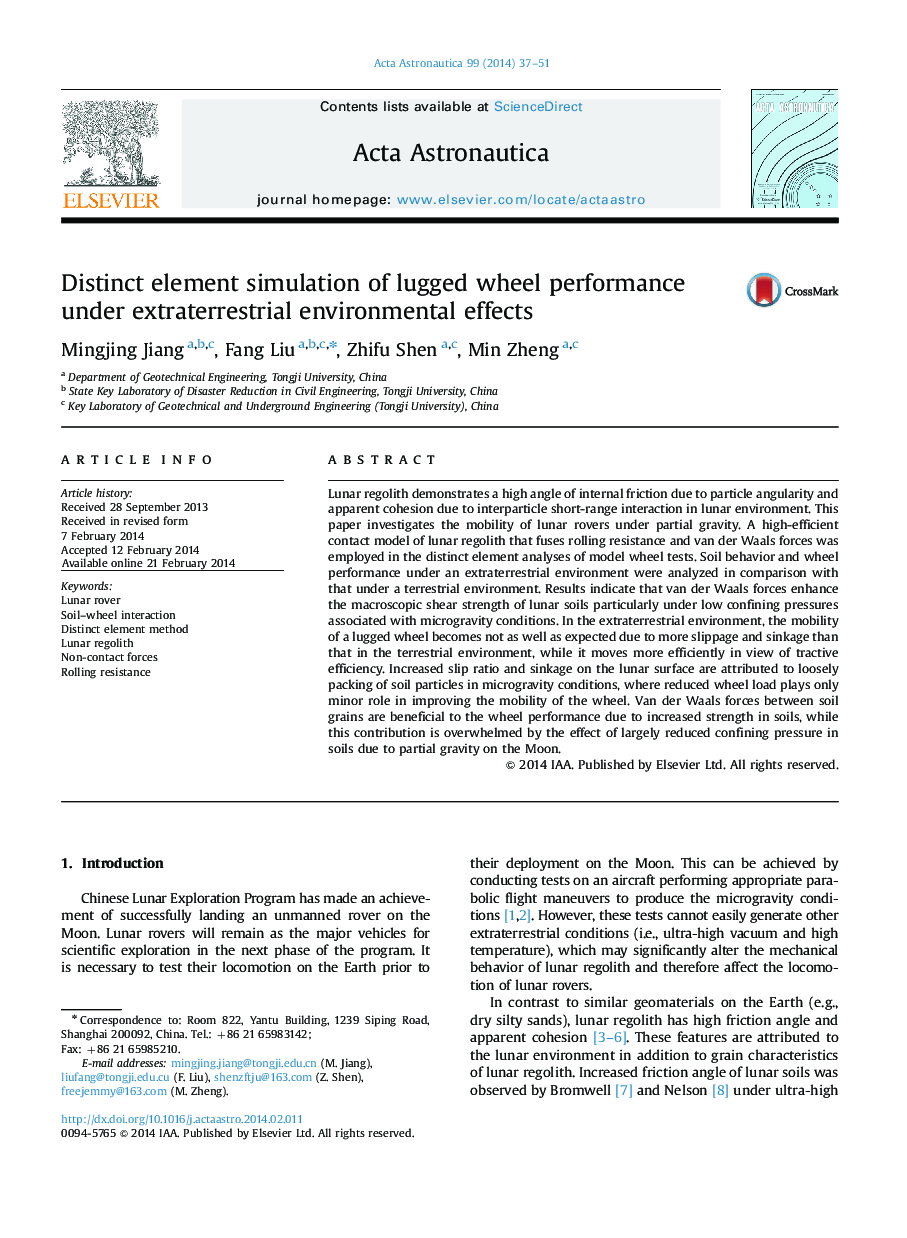| Article ID | Journal | Published Year | Pages | File Type |
|---|---|---|---|---|
| 8056896 | Acta Astronautica | 2014 | 15 Pages |
Abstract
Lunar regolith demonstrates a high angle of internal friction due to particle angularity and apparent cohesion due to interparticle short-range interaction in lunar environment. This paper investigates the mobility of lunar rovers under partial gravity. A high-efficient contact model of lunar regolith that fuses rolling resistance and van der Waals forces was employed in the distinct element analyses of model wheel tests. Soil behavior and wheel performance under an extraterrestrial environment were analyzed in comparison with that under a terrestrial environment. Results indicate that van der Waals forces enhance the macroscopic shear strength of lunar soils particularly under low confining pressures associated with microgravity conditions. In the extraterrestrial environment, the mobility of a lugged wheel becomes not as well as expected due to more slippage and sinkage than that in the terrestrial environment, while it moves more efficiently in view of tractive efficiency. Increased slip ratio and sinkage on the lunar surface are attributed to loosely packing of soil particles in microgravity conditions, where reduced wheel load plays only minor role in improving the mobility of the wheel. Van der Waals forces between soil grains are beneficial to the wheel performance due to increased strength in soils, while this contribution is overwhelmed by the effect of largely reduced confining pressure in soils due to partial gravity on the Moon.
Related Topics
Physical Sciences and Engineering
Engineering
Aerospace Engineering
Authors
Mingjing Jiang, Fang Liu, Zhifu Shen, Min Zheng,
